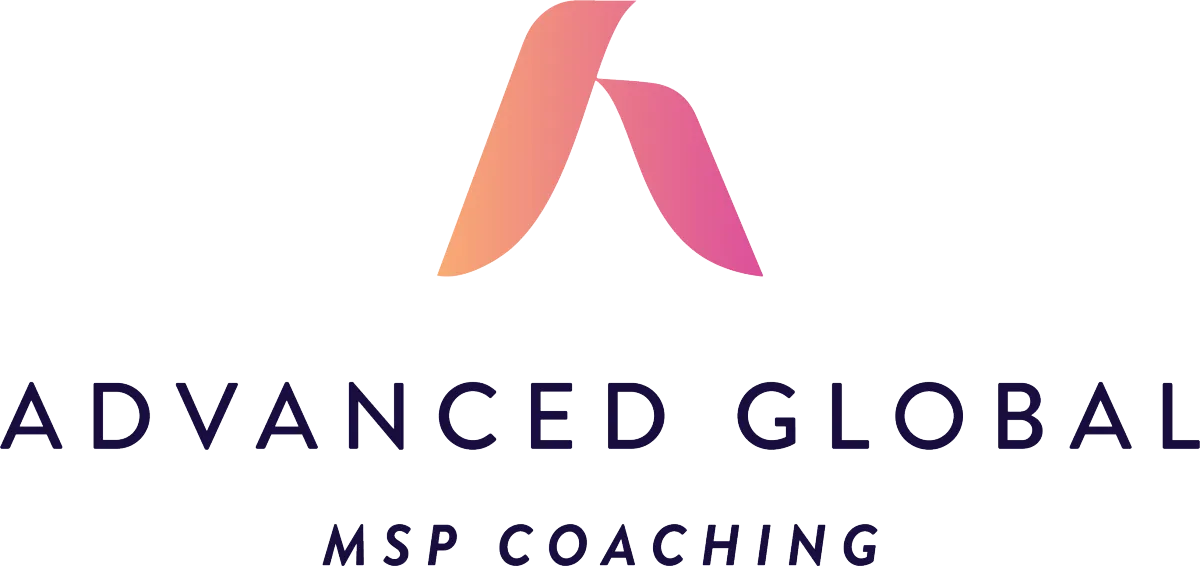
5 Whys Autotask Doesn’t Tell MSPs How to Configure PSA Automation (and What to Do Instead)
If you're running an MSP and Autotask feels more like a maze than a solution, you're not alone.
Many MSP Owners open Autotask for the first time expecting a ready-to-run system, only to find what feels like an empty shell. Despite its reputation as a powerful PSA platform, Autotask doesn’tprovide real guidance on how to configure it for real-world service delivery. Why is that? And more importantly, what can you do about it?
At Advanced Global MSP Coaching, we’ve spent years helping MSPs untangle this exact challenge. Here are the five reasons why Autotask keeps its configuration guidance vague and how we help bridge that gap.
1. Autotask Is a Software Company, Not a Managed Service Provider
Expecting a software company to understand the daily grind of running an MSP is a mismatch.
Autotask (and its parent companies Datto and Kaseya) builds technically robust software. But software companies think in terms of features, modules, and databases, not SLAs, profitability metrics, or Tech efficiency. While a few staff may have MSP experience, the platform is built from a developer’s mindset, not an operator’s.
This disconnect becomes obvious when you try to implement something practical, like SLA automation. The building blocks are there, but no blueprint in sight.
“No PSA comes pre-configured for profit or MSP use.” - Aaron Kennedy, Cognition 360
2. PSA Configuration Is Inherently Complex
Configuring Autotask isn’t just technical. It’s strategic.
SLA automation alone requires:
At least 11 segmented workflows using the Priority field
SOPs and SLAs aligned to each workflow
Default Service Desk Contracts for every client
Specific configuration of status SLA events and contract categories
And it all starts with MSA Alignment, and then continues thru a doable Client Journey based on Relationship with the Client, and Performance Expectations.
Miss any step, and automation breaks. Many MSPs pour hours into setup, only to discover their SLAs aren’t triggering properly.
"Best-in-class MSPs should aim for above 95% SLA adherence." - LogMeln
Without the right structure in place, that’snearly impossible.
3. Frequent Software Updates Break the Knowledge Chain
Autotask releases 4–5 major updates each year, not counting weekly maintenance patches. The pace of change is relentless.
These rapid updates lead to:
Outdated training materials
Inconsistent internal documentation
Siloed communication across product and support teams
"Features change quickly, documentation can't keep pace, and training becomes outdated almost as soon as it's published." - Kaseya MSP Benchmark Survey
The result? Confused users and consultants constantly trying to catch up.
4. Legal Liability Silences Their Advice
This one’s simple: Kaseya’s legal team has drawn a line.
If a rep tells you how to configure Autotask and it harms your business, they could be liable. So instead of guidance, you get vague navigation help.
Ask:
"How do other MSPs configure this?"
"What’s the standard build for SLAs?"
"Can I see a real-world example?"
You’ll get silence. Not because they don’t know, but because they’re not allowed to tell you.
"You can tell them how to navigate in the software, but not how to run their business." - AG Coaching Client Feedback
5. Autotask Relies on External Expertise by Design
Here’s the part most MSPs don’t realize: Autotask assumes you’ll hire an expert.
Back in 2014, Autotask certified over a dozen consultant partners to deliver the hands-on guidance they couldn’t. Most of the top consultants today still trace back to that program.
Trying to figure it out internally often leads to years of trial and error. We’ve seen it take up to 7–10 years to fully optimize Autotask in-house. Or about 4 months with a guide.
"MSPs must rely on outside consultants who have the real-world experience to guide them or invest 20 hours per week for 7–10 years to figure it out." - AG Coaching Whitepaper
The Path Forward: Stop the Struggle. Start the Build.
If you’re still operating with a bare-minimum setup, that’s not just inefficient, it’s costing you real money. $600 per week per Tech according to Kaseya and the data they see in your Autotask dBase.
At Advanced Global, we do more than train. We:
Build out your Autotask instance
Configure SOP-aligned SLAs, workflows, and contracts
Deliver Advanced Live Reports tailored to your business
Validate results using benchmarks like Tech utilization and SLA adherence
"Technician utilization rate should fall between 70-90%. Below that, you're losing revenue. Above that, you're risking burnout." - Rev.io
One MSP we worked with increased Tech efficiency by 13% and improved Client satisfaction by 23% within a quarter.
AG + Kaseya = Stronger Together
Kaseya provides the platform. We make it work smarter.
With proven results across hundreds of MSPs, we deliver:
Standardized Autotask builds
Proven SOPs from top-performing peers
Profitability gains backed by a money-back guarantee
“This report drives home the importance of automation and integration to make MSPs more productive, efficient, and profitable.” - Mike Puglia, Chief Strategy Officer, Kaseya (Kaseya Benchmark Report)
Schedule a Free Strategy Call
We’ll show you exactly where the value is hidden in your Autotask configuration and how to unlock it.
Book a call with Steve and the AG team.
👉Schedule Your Call Now
Additional Stats to Keep in Mind:
The global MSP market is projected to surpass $1 trillion by 2033. (MSP SEO Agency)
Only 44% of MSPs are satisfied with the level of automation their current tools deliver. (Datto 2025 State of the MSP Report)
67% of MSP executives say integration between applications is “very important.” (Kaseya 2024 Benchmark Survey)
Now is the time to stop fighting your tools and start leveraging them.
